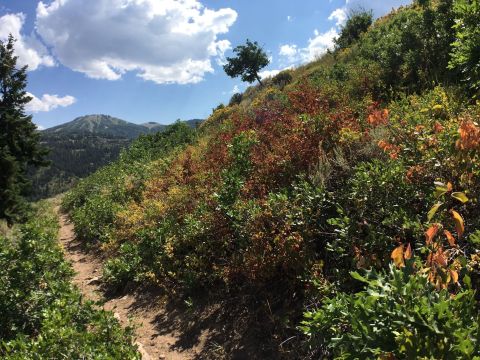Why You'll Want To Step Carefully On Utah's Trails This Year
If you live pretty much anywhere in Utah, you’ve likely encountered at least one while exploring in the wilderness (or even your backyard!). Keep scrolling to find out why you’re likely to see even more rattlesnakes this summer, and how you can avoid a nasty bite.
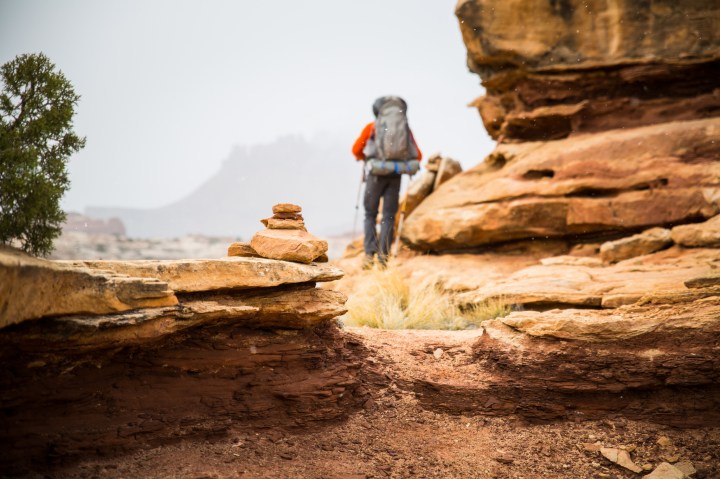
The population of rodents is much smaller this year due to drought, so rattlesnakes are more active during the day in order to find food. While they typically try to avoid humans at all costs, your odds of seeing them this year are increased.
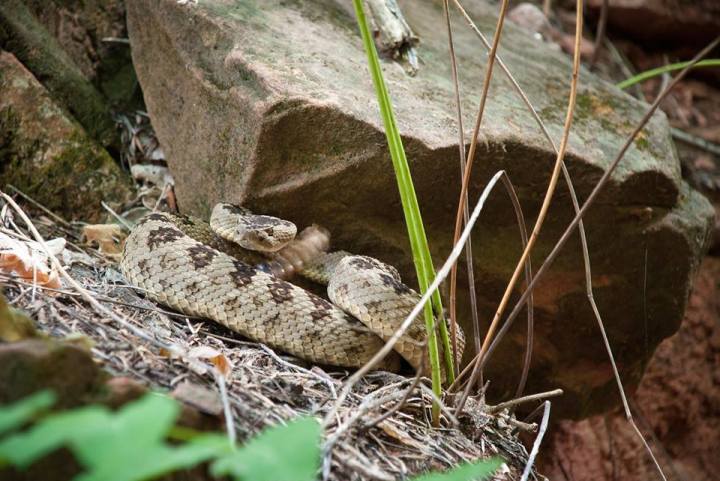
Rattlesnakes and other snake species are important to the ecosystem because they keep the rodent population in check. It’s illegal to kill a rattlesnake in Utah, unless you feel that your life is in imminent danger. A rattlesnake can have a reflexive bite that releases venom for as long as 24 hours after it dies, so if you find a dead snake, leave it alone.
Advertisement
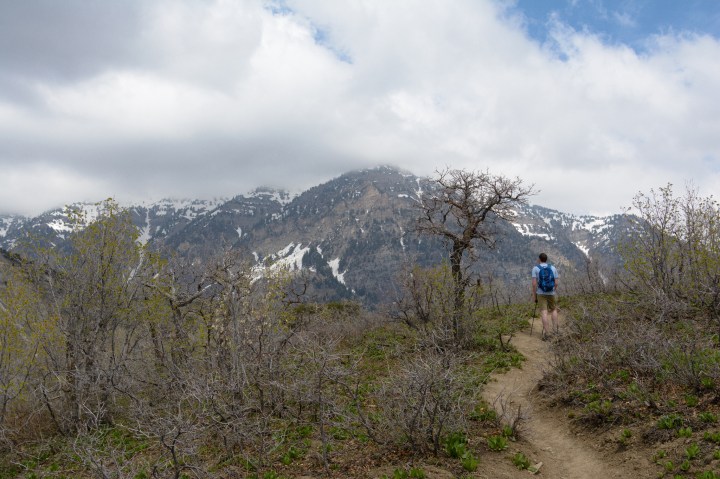
Watch where you’re walking, and avoid walking through thick underbrush. If you’re scrambling on boulders, be aware of where you’re placing your hands - snakes love to bask on rocks to warm up. If you take a break on a log or rock, watch where you’re sitting. Rattlesnakes have great camouflage, and their colors and patterns mimic the environment, so they blend right in.
Advertisement
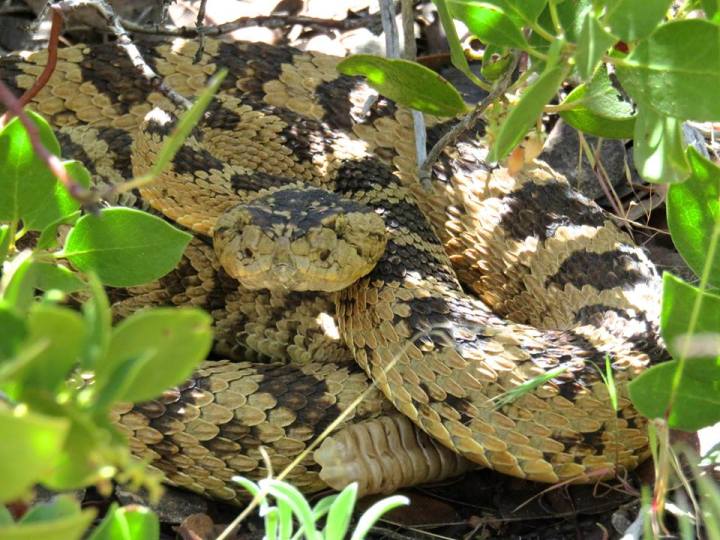
The good news is that rattlesnakes only have a strike distance of about half the length of their bodies, and the average Great Basin rattlesnake in Utah is only two to three feet long. As long as you’re several feet from the snake, the odds are good that it can’t bite you. When you hear the rattle of a snake, stop in your tracks and look around to see if you can see it or zero in on its location. Give the snake a wide berth and just continue on your hike.

Rattlesnakes don’t have ears, but they sense you coming from the vibrations in the ground, or from the heat sensors behind their nostrils. They want even less to do with you than you want to do with them. If they have time, they’ll usually slither away and hide, and you won’t even realize they were there. If they’re caught by surprise, they may deflate their bodies and rely on their camouflage to hide them, or they’ll coil up and start rattling to warn you away.

Remain as calm as you can, remove any jewelry (rings, watch, etc.) from the area near the bite, and try to keep the body part that’s bitten below the heart. Don’t try to suck the venom out of the wound, and don’t apply a tourniquet. The anti-venom works on rattlesnake bites from all species, so there’s no need to identify the species that bit you, and you shouldn’t attempt to capture or photograph the snake - just get off the trail and to a hospital.
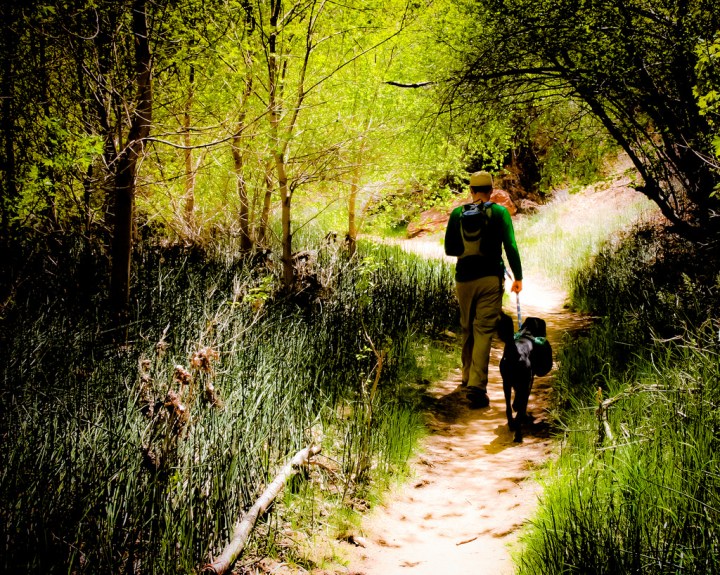
Dogs learn about their environment with their noses, so if they run into a snake, their first impulse may be to stick their snout right down into the snake to get a good whiff. The snake doesn’t appreciate this intrusion, and rewards them with a bite, which can be fatal. Keep your dog close to you on the trail, and on leash if necessary.
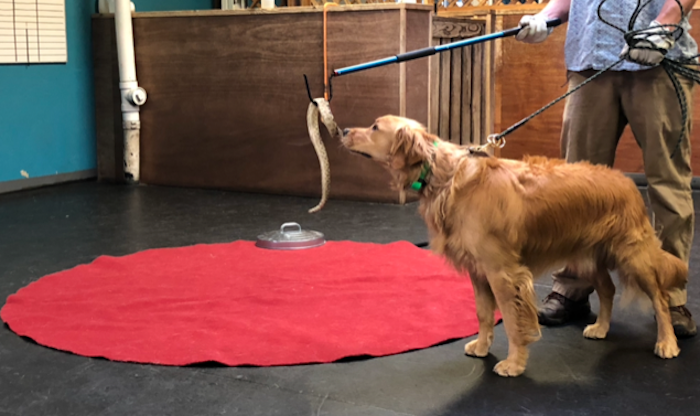
Catherine Armstrong
Mike Parmley, owner of Rattlesnake Alert, trains dogs to avoid rattlesnakes. His four-hour-long aversion training introduces pups to live rattlesnakes (the snakes have been de-fanged, so they can't deliver a venomous bite). He lets the dogs get up close to the snakes and smell them so they can recognize a rattler by its unique smell. The dog gets a good look at the snake, and hears its rattle. Later in the training, Mike sets up scenarios where the dog approaches the snake with its owner, then he uses an e-collar to give the dog a mild impulse when it gets close.
Advertisement
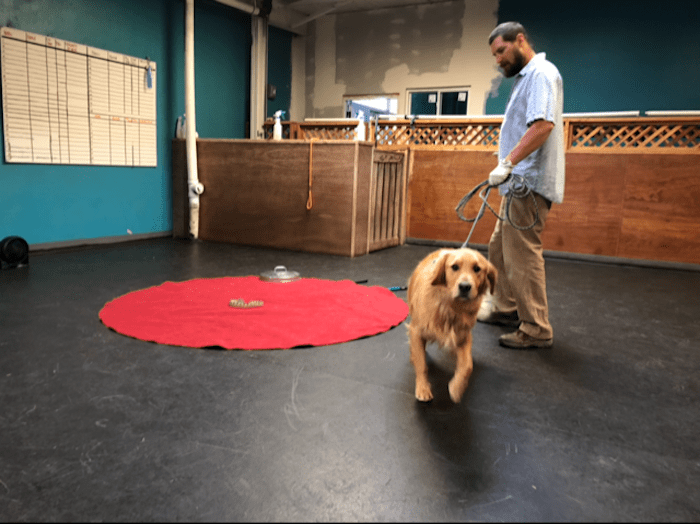
Catherine Armstrong
By the end of the aversion training session, your dog will not only avoid rattlesnakes, he’ll likely alert you of their presence by his behavior. Dogs can detect the scent of a rattlesnake from 20 yards away, and if they're downwind under the right conditions, can even smell a snake from 50 yards away. To learn more about rattlesnake aversion training,visit Rattlesnake Alert’s website.
Have you seen a rattlesnake on the trail yet this year?
Now that you know what to do when you see a rattlesnake, there’s no reason to avoid hiking, and you’ll want to check out these 11 trails that are some of the greatest on earth.
OnlyInYourState may earn compensation through affiliate links in this article. As an Amazon Associate, we earn from qualifying purchases.


